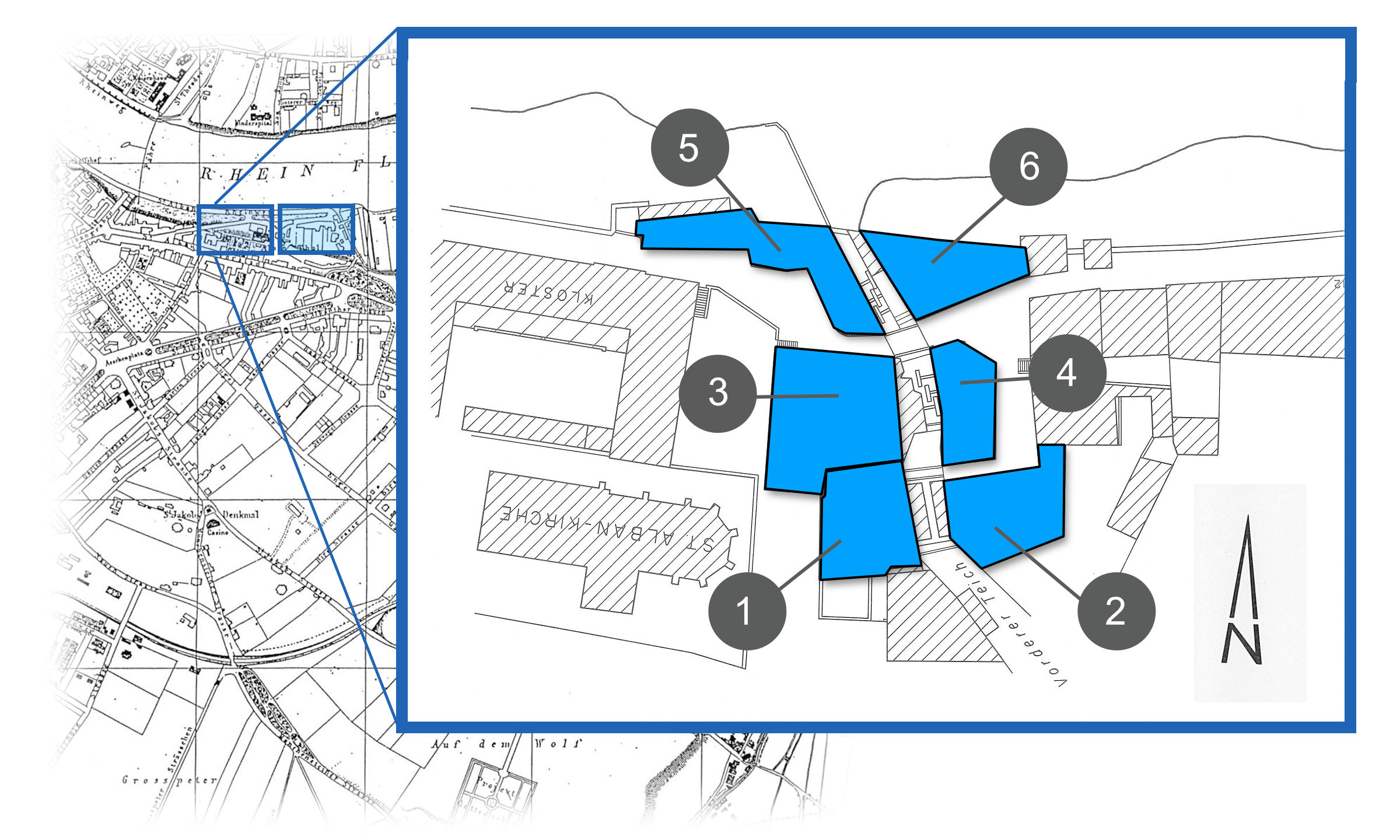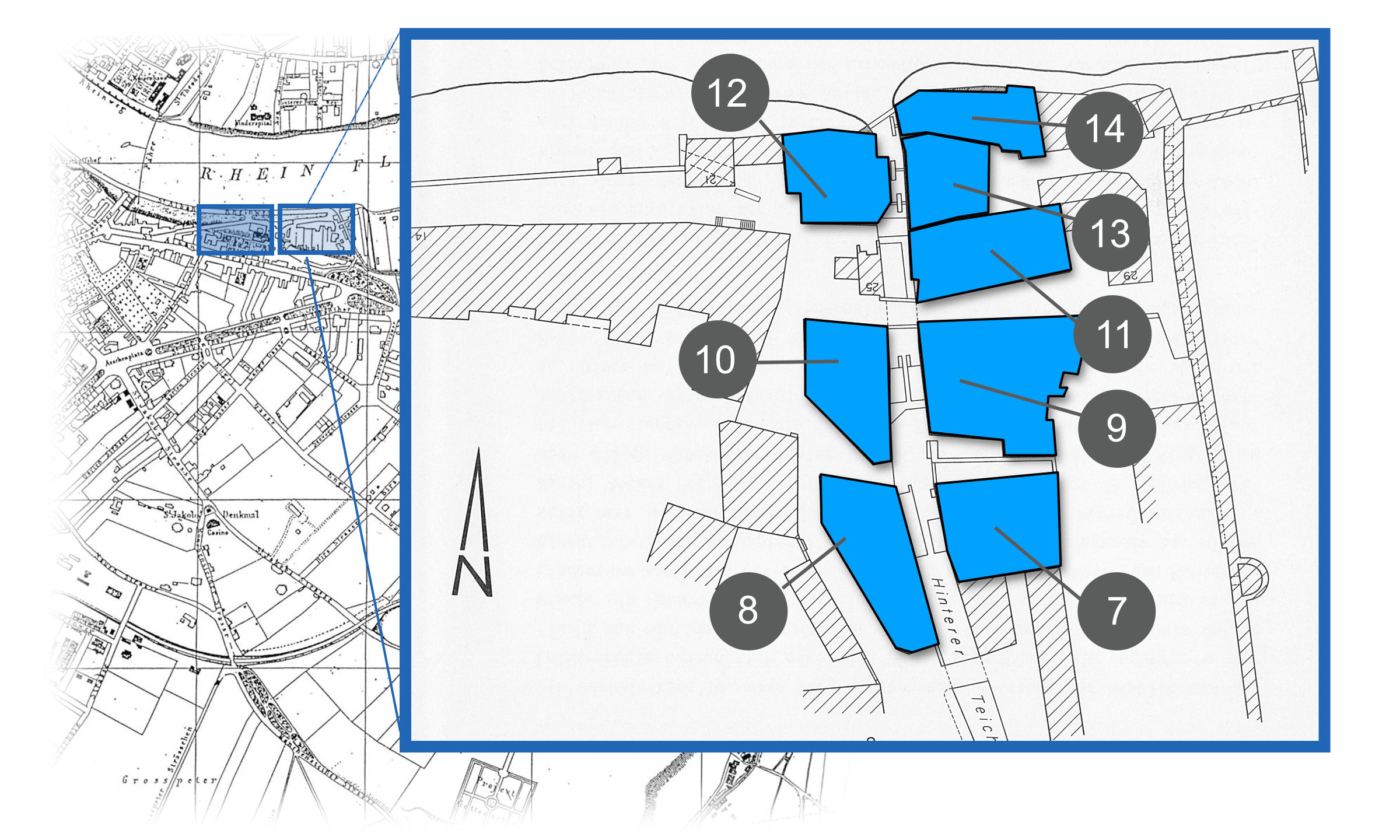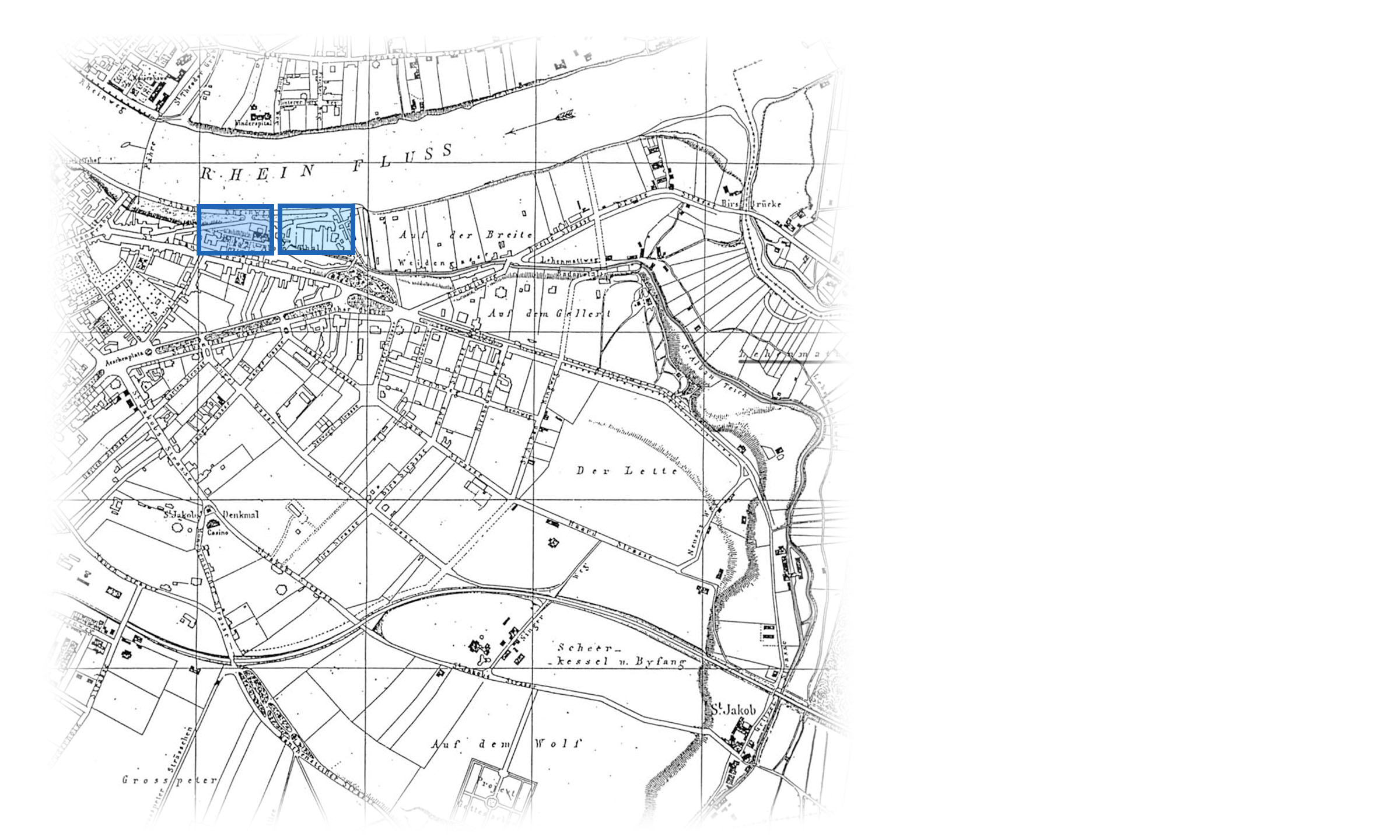Location of mills in St. Alban Valley

St. Alban Church
Monastry
Vorderer Teich
Hirzlimühle
(Vordere Spiegelmühle)
2 Räder, 26.18 PS
Spitalmühle
2 Räder, 26.18 PS
1883 teilweise abgebrannt
Orismühle
(Tabakmühle, Vordere Schleife)
2 Räder, 32.60 PS
1854 abgerissen, Fabrikgebäude 1890 errichtet
Spittelmüllersmühle
(Steinenklostermühle)
32.60 PS, 1883 abgebrannt.
Neubau 1978 abgebrochen.
Spisselimühle
2 Räder, 72.45 PS
1891 abgebrochen
Lippismühle
(Leimermühle)
2 Räder, 72.45 PS
1891 abgebrochen
to find out more about
the individual mills
2 - Spitalmühle
3 - Orismühle
4 - Spittelmüllersmühle
5 - Spisselimühle
6 - Lippismühle

Rychmühle
40 PS (zusammen
mit der Zunzgermühle)
Zunzgermühle
40 PS (zusammen mit der Rychmühle)
1853 abgebrochen
Gallicianmühle
(Klingentalmühle) 23.23 PS
Stegreifmühle, 23.23 PS
1963 abgebrannt.
1980 originalgetreuer
Wiederaufbau
Haus "Zum Esel"
Hintere Schleife
(Almosenmühle)
3 Räder, 36.54 PS
1896 abgebrochen
Herbergsmühle (Hintere
Spiegelmühle)
3 Räder, 36.54 PS
1960 abgebrochen
Rheinmühle (Spiegelmühle)
2 Räder, 96.25 PS
1888 abgebrochen
to find out more about
the individual mills
08 - Zunzgermühle
09 - Gallicianmühle
10 - Stegreifmühle
11 - Haus zum Esel
12 - Almosenmühle
13 - Herbergsmühle
14- Rheinmühle


